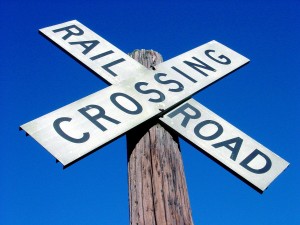
Though we are taught at an early age to look both ways before crossing the street, many adult motorists take for granted that a train can approach a railroad crossing, even if there are no flashing lights or crossing arms to warn that a train is coming. Many railroad crossings are unguarded and even those with lights and gates may malfunction, causing devastating train accidents that severely injure and kill motorists.
Unfortunately, train accidents, and specifically, railroad crossing accidents, happen frequently. Often, these accidents and deaths could have been prevented.
Operation Lifesaver reported more than 2,000 highway-rail grade crossing collisions in 2016, in the midst of their education and awareness program dedicating to ending tragic collisions. Other stats that they reported:
-
50% — Percentage of vehicle/train collisions that occur at crossings with active warning devices (lights, gates, bells)
-
40 — Times you are more likely to die in a crash with a train than you are to die in an automobile crash
-
2 — Average time, in hours, between each incident where a vehicle or pedestrian is struck by a train
Operation Lifesaver also has listing of the most common states for railroad collisions, where Texas was the #1 offender. More than 1/3 of Illinois’ railroad crossing collisions each year happen in the six county region of northeastern Illinois (DuPage, Kane, Lake, McHenry, Will and Cook County), due to the large number of logistics hubs and rail lines in those regions.
Causes of Railroad Crossing Accidents
Railroad crossing collisions can have any number of causes, including bot not limited to:
-
Failure to install proper warnings, such as lights, alarms (crossing bells) or a functioning crossing gate
-
Defective warnings — inoperable lights, bells or gates
-
Improper sight lines that prevent a vehicle’s driver from seeing an oncoming train until it is too late
-
Failure to properly maintain the crossing — such as allowing overgrown trees, vegetation and other foliage to obstruct or hide an oncoming train
-
Improperly parking a train at or near a crossing — this not only hides an oncoming train from view, but gives motorists a false sense of safety in seeing a parked train at the crossing
-
Failure to sound the train’s horn or whistle at or near the crossing
-
Other negligence that may appear on the train’s data recorder or video recorder
It takes a skilled team of investigators, experts and railroad crossing attorneys to identify critical information. A railroad company is responsible for assuring that train crossing warning systems are active and in working order. In one of our railroad accident cases, the flashing lights were working, but there was no train visible. As the vehicle attempted to cross the tracks, a train came around a curve, failed to use its horn and collided with the car.
In another case, a train was obstructed by overgrown vegetation and the crossing lights did not activate. Too often, railroad companies allow weeds, grass, trees and other vegetation to overgrow near railroad crossings. This overgrown foliage prevents motorists from seeing an oncoming train. Consumers should always take great caution when approaching intersections with rail lines, with the consequences being so grave with collisions occurring at locomotive speed.
Click here for the list of the most dangerous states for rail crossings.


